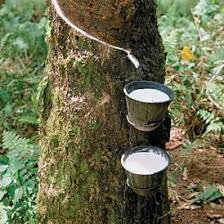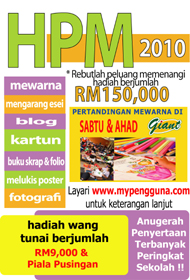 With the emergence of new scientific tools, Malaysia’s natural rubber industry can harbour new hopes, writes AHMAD IBRAHIM.
With the emergence of new scientific tools, Malaysia’s natural rubber industry can harbour new hopes, writes AHMAD IBRAHIM.The export of rubber products, especially latex gloves, earns millions every year. Combined with earnings from rubberwood furniture export, NR is still a major economic force. With the right policies, this could be sustainable.
In recent years, NR prices have shown positive trend, reaching an unprecedented high of more than RM10 per kg. Investors are re-evaluating NR's tag as a sunset industry. Is NR bouncing back? It is still too early to make any conclusion, but the signs are encouraging.
For Malaysia, income from oil exports will start declining once the country becomes a net importer, as expected within a decade. We need to explore other income sources. The Academy of Sciences Malaysia recently teamed up with the Malaysian Rubber Board to explore such opportunities.
A forum was held to discuss how science and technology can chart new directions for the natural rubber industry. The verdict was that NR can bounce back if the right strategies in science, technology and innovations are pursued.
We now live in a new global business environment. Buying environmentally-friendly products or "green purchasing" is more popular; indeed, it has become regulatory practice in many countries. There is also a growing preference for natural and renewable materials. NR is definitely natural and renewable, commanding preference over synthetic materials in green economies.
At the moment, NR is still a thriving global business. The world NR production increased from six million tonnes in 1995 to 9.6 million tonnes last year. Consumption has also increased to 9.5 million tonnes. Demand is not a problem for NR.
Among the NR-producing countries, only Malaysia has shown a decrease in production. The biggest increase has been in Vietnam, where production rose nearly 500 per cent for the period 1995-2009. Malaysia's production decreased by 21 per cent during the same period. NR acreage in Malaysia is also on a downward trend.
NR consumption in Malaysia is 595,000 tonnes, of which more than 470,000 tonnes end up as latex products. Malaysia is now the world's largest consumer of latex concentrate, the world's largest supplier of medical rubber gloves and the world's largest supplier of latex thread and cord.
The import of NR into the country has been increasing. Last year, total NR import exceeded 730,000 tonnes. Exports, however, declined to about 700,000 tonnes. With the decline in rubber cultivation, not only is export revenue decreasing, there is also a worrying dependence on imports.
This may not be sustainable because when the other producing countries start expanding downstream, they will have less latex concentrate for export. This means Malaysia's latex products sector will be adversely affected.
Annual world rubber consumption is expected to reach 28 million tonnes by 2018, about half of it NR. More than 65 per cent of NR consumption is now in Asia, with China leading. Vehicle tyres account for 80 per cent of NR use, with Asia a dominant market.
There is certainly demand, but supply may face challenges. There are constraints on further yield improvement. Climate change is a factor. There are now more rainy days to dilute the latex, higher morning temperatures affecting latex flow, extended wintering days, and the emergence of new diseases, all contributing to tighter supplies and partly to higher prices.
Malaysia is now behind Thailand and Indonesia in NR production. Very soon, India's production may also exceed Malaysia's. Though oil palm has taken most of the areas earlier under NR, there are still sizeable areas available for NR, especially in the drier north where oil palm does not perform as well. Why aren't big plantations venturing there?
For that matter, why aren't big rubber plantation houses venturing into Indonesia and the other emerging rubber-growing countries? China and even Vietnam are already looking beyond their borders to plant NR.
The focus should be on new and unique downstream technologies in latex products and the dry rubber products that would strengthen Malaysia's position. The Malaysian NR industry should capitalise on the growing green consumerism movement in the world.
Modification work on NR, whether chemical or biological, should be a useful research area not only for developing new materials but also to improve the properties of NR vis-a-vis competing materials such as synthetics.
The rubberwood sector needs careful planning, including forest plantation programmes and other process improvement.
Research in the basic science of NR needs renewed vigour. We also need to research new rubber-like materials which can complement NR in production. Already we hear of a promising rubber crop that produces latex without the allergenic proteins associated with Hevea.
New breakthroughs in genetic engineering make it technically feasible to deploy the rubber tree as a biofactory for various products, including pharmaceuticals and fuel. The potential application of nanotechnology to further improve NR properties calls for serious research.
Technology indeed holds the key to the future of NR. It would be strategic to establish a technology intelligence group tasked with the responsibility of collating information on global technology developments related to the NR industry.
With the emergence of new scientific tools, NR can harbour new hopes. With the right investment in scientific research and development, there is no reason why the glory days of NR cannot return.
The writer is a fellow of the Academy of Sciences Malaysia












0 Responses so far.
Post a Comment